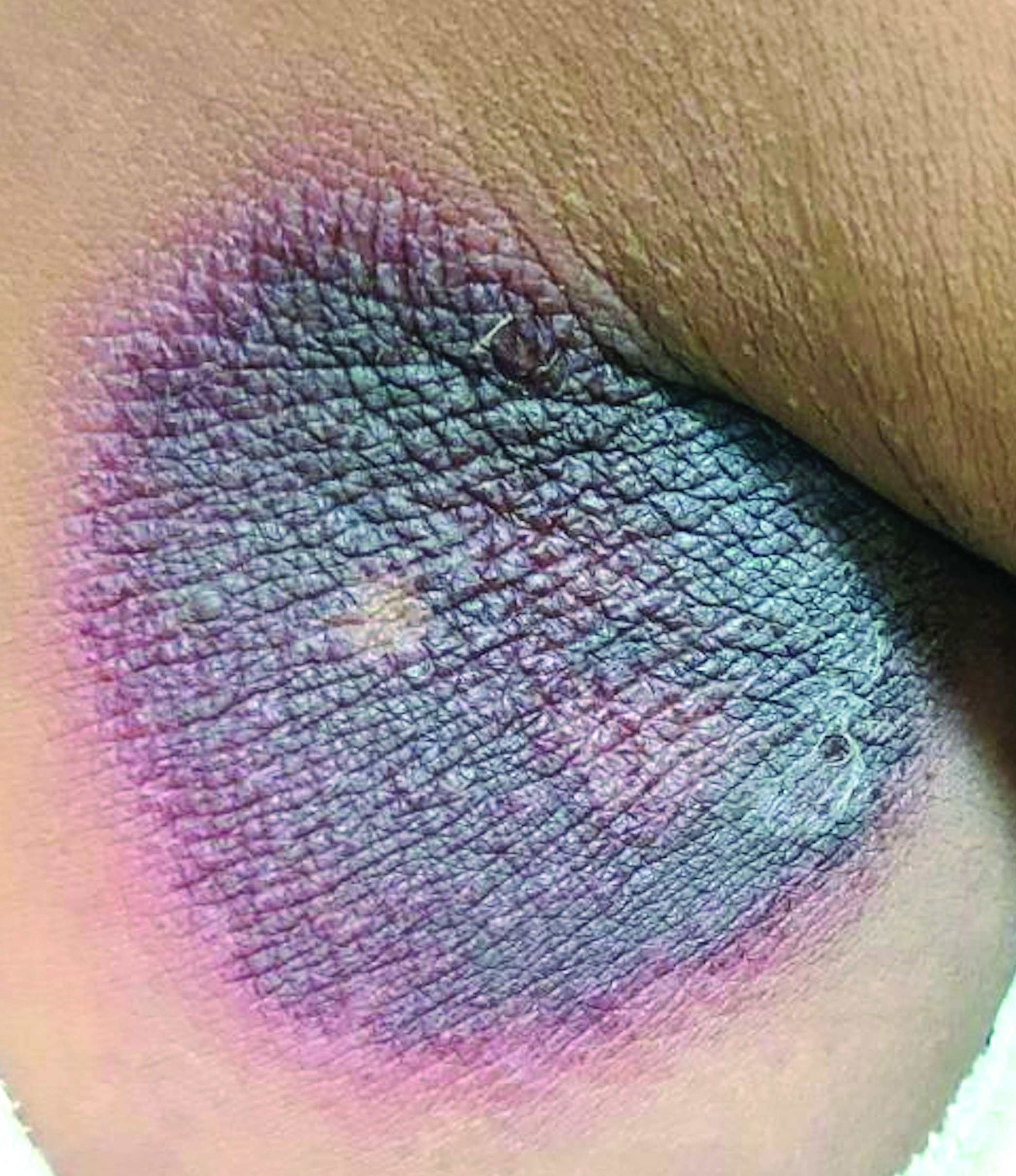Translate this page into:
Fixed drug eruption (FDE) secondary to paracetamol

*Corresponding author: Anmol Batra, Department of Dermatology, AIIMS Rishikesh, Rishikesh, Uttarakhand, India. anmolbatra9@gmail.com
-
Received: ,
Accepted: ,
How to cite this article: Batra A, Hazarika N. Fixed drug eruption (FDE) secondary to paracetamol. CosmoDerma 2022;2:17.
An 8-year-old male child was brought to the Dermatology OPD with a history of cutaneous lesion associated with itching and burning sensation over left buttock for 1 day. There was a preceding history of drug intake (tab. paracetamol 500 mg) for high-grade fever one day back at 8 am which was followed by itching and burning sensation with a reddish lesion at 3 pm that is after 7 hours of paracetamol intake. There was a past history of a similar lesion at the same site 3 months back after 48 hours of diclofenac plus paracetamol intake taken for fever and headache. That lesion had healed after 1 month with residual hyperpigmentation. On cutaneous examination, a single sharply-defined oval central dusky, violaceous to the hyperpigmented plaque of size 7 × 5 cm with the peripheral erythematous halo was present over the left upper buttock extending to gluteal cleft [Figure 1]. On the basis of this characteristic clinical presentation, a diagnosis of Fixed Drug Eruption (FDE) secondary to Paracetamol was made. FDE typically presents 30 minutes to 8 hours after drug exposure. NSAIDs (25%), paracetamol (24%), and co-trimoxazole (5%) are the most frequent triggers.[1] It is a form of classical delayed-type hypersensitivity reaction with skin resident CD8+ T cells as key mediators. Parents and child were told to avoid paracetamol in the future and was started on oral antihistamines and topical corticosteroid for 2 weeks with complete recovery in 10 days.

- Single sharply-defined oval central dusky, violaceous to hyperpigmented plaque of size 7 × 5 cm with peripheral erythematous halo over left upper buttock extending to gluteal cleft.
Declaration of patient consent
The authors certify that they have obtained all appropriate patient consent.
Financial support and sponsorship
Nil.
Conflict of interest
There are no conflicts of interest.
References
- Current causes of fixed drug eruption in the UK. Br J Dermatol. 2001;145:667-8.
- [CrossRef] [PubMed] [Google Scholar]





